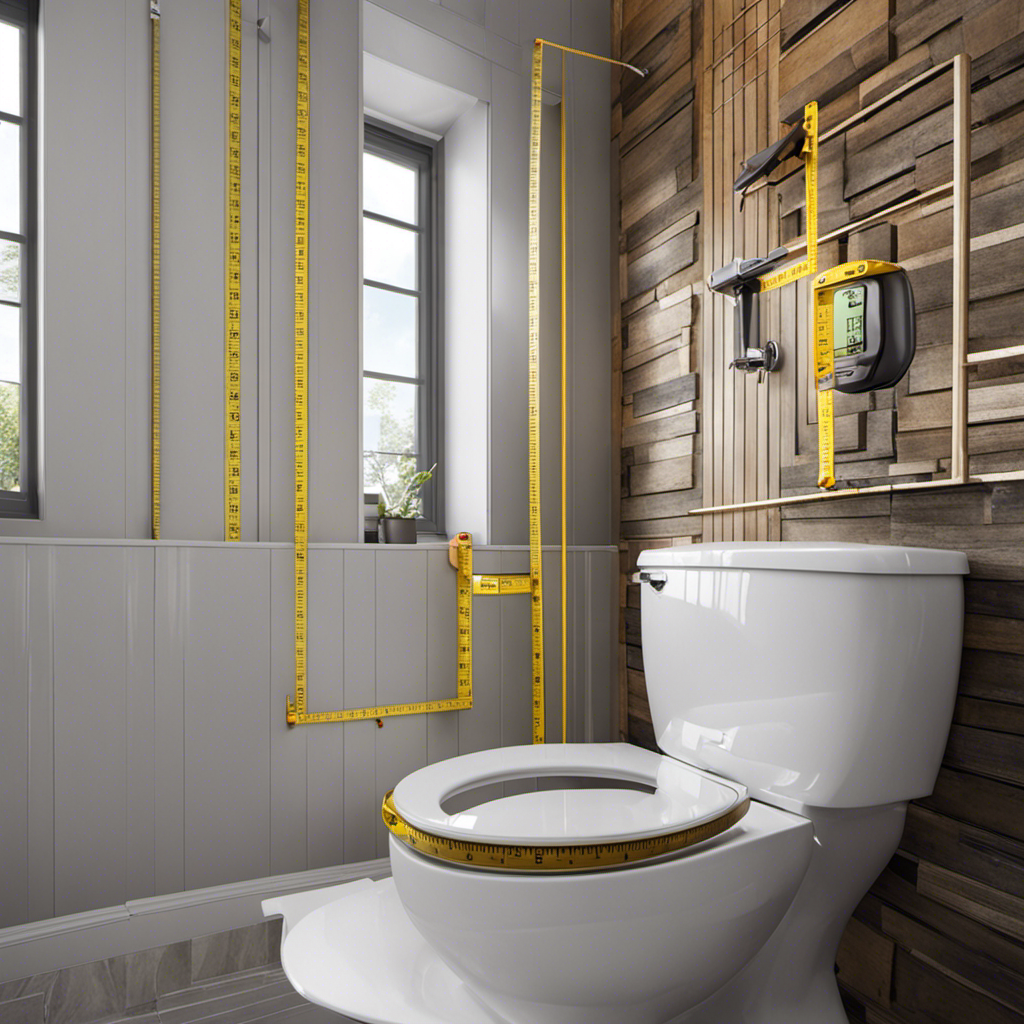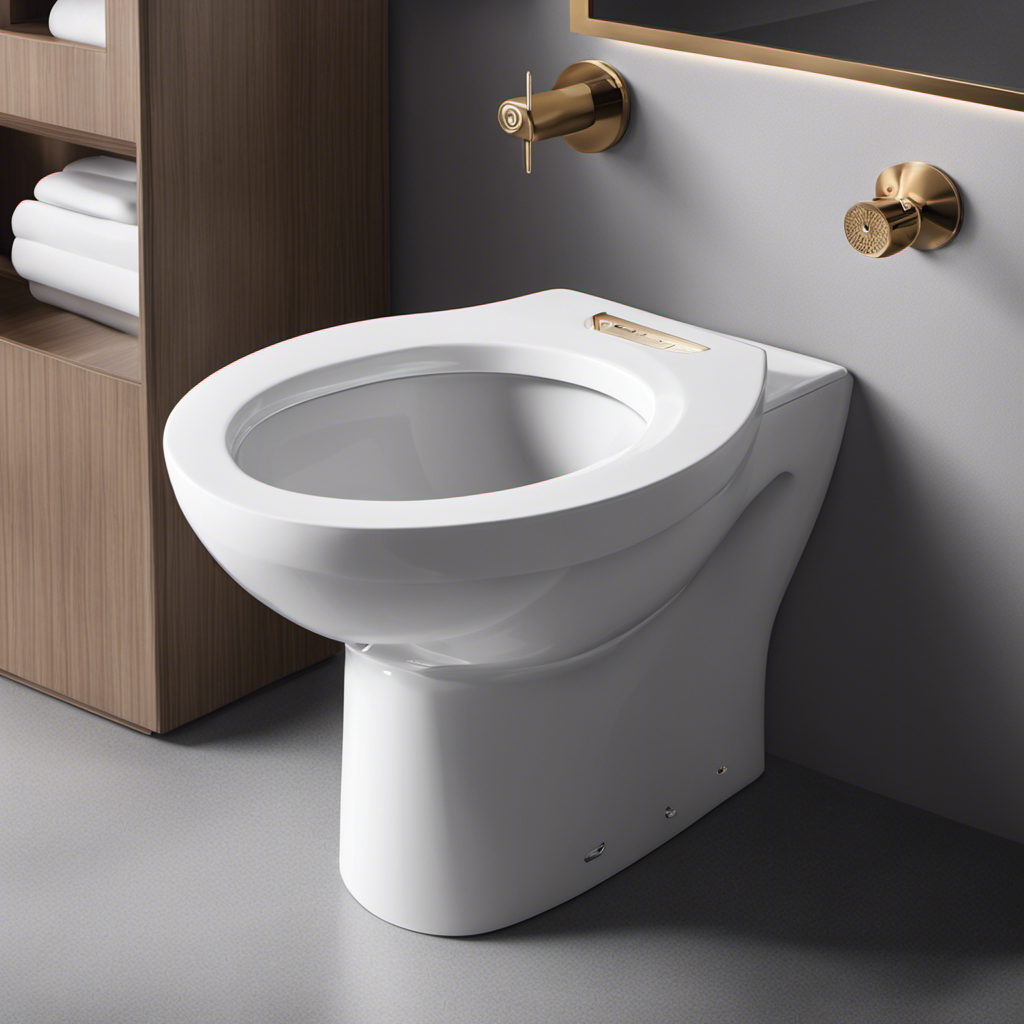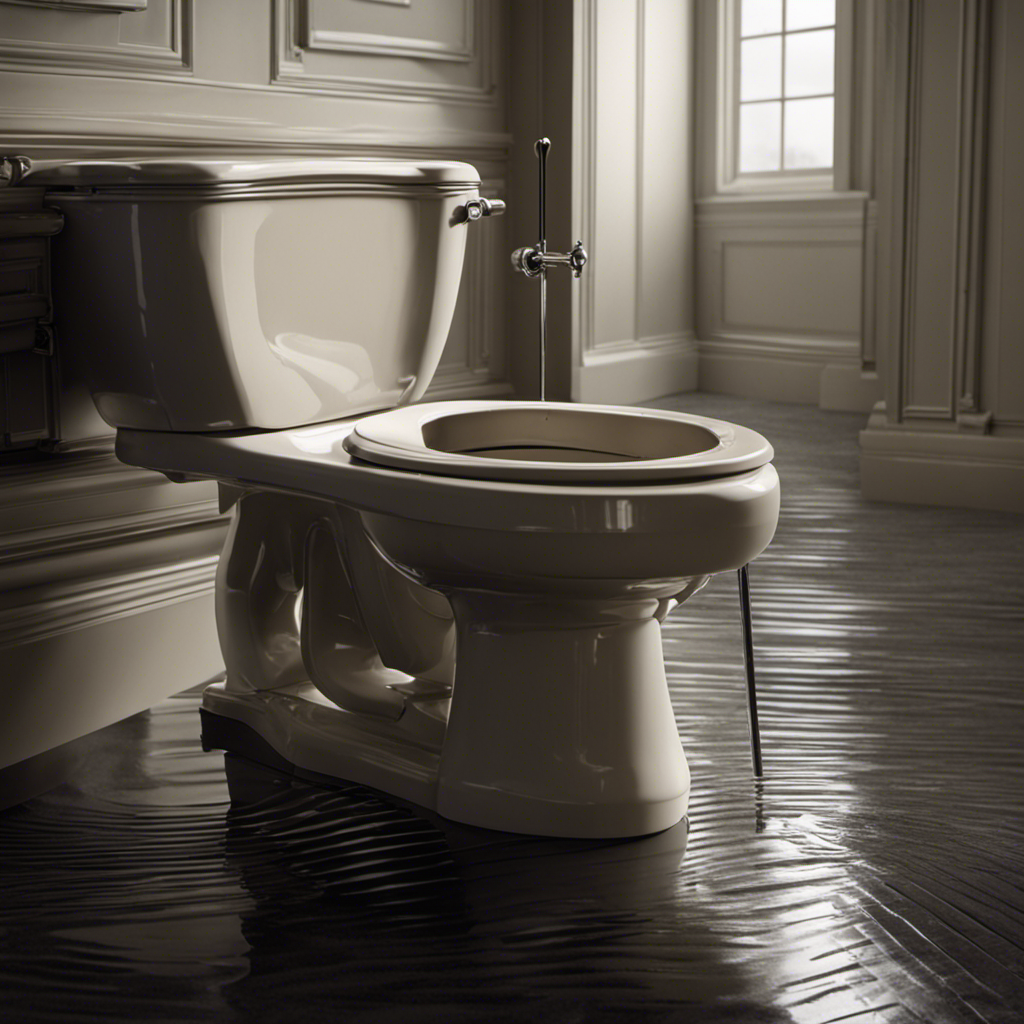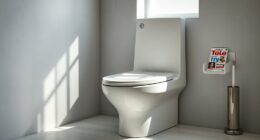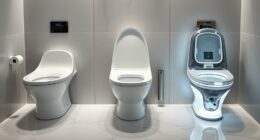Hey there!
Have you ever found yourself in a sticky situation, trying to install a toilet but not knowing how to measure the rough in? Well, fear not, because I’ve got you covered!
In this article, I’ll walk you through the step-by-step process of measuring a toilet rough in, sharing all the tips and tricks you need to know.
With the right tools and a little know-how, you’ll be able to tackle this task with confidence and get your toilet installed in no time.
Let’s dive in!
Key Takeaways
- Accurate measurement of the toilet rough in is crucial for proper fit and installation.
- Common rough in sizes for toilets are 10 inches, 12 inches, and 14 inches.
- The measurement should be taken from the finished wall, not the baseboard or other protruding surfaces.
- It is important to consider the thickness of the finished wall when measuring the rough in size.
Understanding Toilet Rough In Measurements
Understanding the toilet rough in measurements is crucial when deciding on a new toilet. The toilet rough in installation refers to the distance between the wall and the center of the toilet’s drainpipe. It is important to determine the toilet rough in size accurately to ensure a proper fit and avoid any installation issues.
To measure the rough in size, start by locating the center of the drainpipe. Then, measure from the wall to this center point. Common rough in sizes are 10 inches, 12 inches, and 14 inches, although other sizes may also be available.
Required Tools for Measuring a Toilet Rough In
To accurately determine the rough-in of a toilet, you’ll need a few essential tools. Here are the three tools you’ll need for measuring a toilet rough in:
-
Tape Measure: This is the most crucial tool for measuring the distance from the finished wall to the center of the toilet flange. Make sure to measure from the finished wall and not the baseboard for accurate results.
-
Level: A level is necessary to ensure that the toilet will be installed correctly and not at an angle. It will help you determine if the floor is level and if adjustments need to be made.
-
Flashlight: A flashlight will come in handy to provide better visibility in dark corners or under the toilet. It will help you see the flange and make accurate measurements.
With these tools in hand, you’ll be prepared to measure your toilet rough in accurately. Now, let’s move on to the step-by-step guide to measure toilet rough in.
Step-by-Step Guide to Measure Toilet Rough In
Now, let’s dive into the step-by-step guide on how to accurately determine the rough-in of your toilet. The toilet rough-in installation is a crucial step in ensuring that your toilet fits perfectly in your bathroom. By measuring the rough-in correctly, you can avoid any future issues and ensure a smooth installation process. Here is a simple guide to help you measure your toilet rough-in accurately:
| Step | Measurement |
|---|---|
| 1 | Locate the center of the drain pipe. |
| 2 | Measure the distance from the wall to the center of the drain pipe. |
| 3 | Subtract the thickness of the finished wall from the measurement obtained in the previous step. |
| 4 | This final measurement is your toilet rough-in size. |
Accurate toilet rough-in measurements are essential because they determine the proper positioning of your toilet and ensure a secure and leak-free installation. By following these steps, you can confidently measure your toilet rough-in and proceed with the installation process without any hiccups. In the next section, we will discuss common mistakes to avoid when measuring a toilet rough-in.
Common Mistakes to Avoid When Measuring a Toilet Rough in
One common mistake to avoid when measuring a toilet rough-in is not accounting for the thickness of the finished wall. This can lead to improper installation and a toilet that doesn’t fit properly.
To ensure accurate measurements and a successful installation, here are three important things to keep in mind:
-
Measure from the finished wall: When measuring the rough-in for a toilet, make sure to measure from the finished wall, not the baseboard or any other protruding surfaces. This will give you the correct distance between the toilet flange and the wall.
-
Consider the thickness of the finished wall: Take into account the thickness of the finished wall when measuring the rough-in. If the wall is thicker than average, you may need to adjust your measurements accordingly.
-
Use the correct measuring tools: To obtain precise measurements, use a tape measure or ruler specifically designed for measuring toilet rough-ins. These tools are typically marked with the standard toilet rough-in dimensions, making it easier to get accurate readings.
Troubleshooting Tips for Difficult Toilet Rough In Measurements
When troubleshooting difficult toilet rough-in measurements, it is important to consider the thickness of the finished wall.
Here are a few tips to correct any issues with toilet rough-in measurements:
-
Double-check your measurements for accuracy. Use a tape measure and measure from the finished wall to the center of the closet bolts.
-
If the measurement seems off, check for any obstructions such as pipes or studs that may be affecting the placement of the toilet.
-
If you are still unable to obtain the correct measurements, it may be time to call a professional. A professional plumber has the expertise and tools necessary to accurately measure and install a toilet, especially in cases where there are complex or unusual circumstances.
Don’t hesitate to seek their help to ensure a proper toilet rough-in measurement.
Conclusion
In conclusion, measuring a toilet rough in is a crucial step in ensuring a proper fit for your new toilet. By following the step-by-step guide and using the necessary tools, you can accurately measure the distance from the wall to the toilet flange.
However, be aware of common mistakes such as not accounting for baseboard or tile thickness. If you encounter difficulties, troubleshooting tips can help you overcome any obstacles.
Remember, a precise toilet rough in measurement is essential for a smooth installation process.
Stay tuned for more expert tips and tricks!
